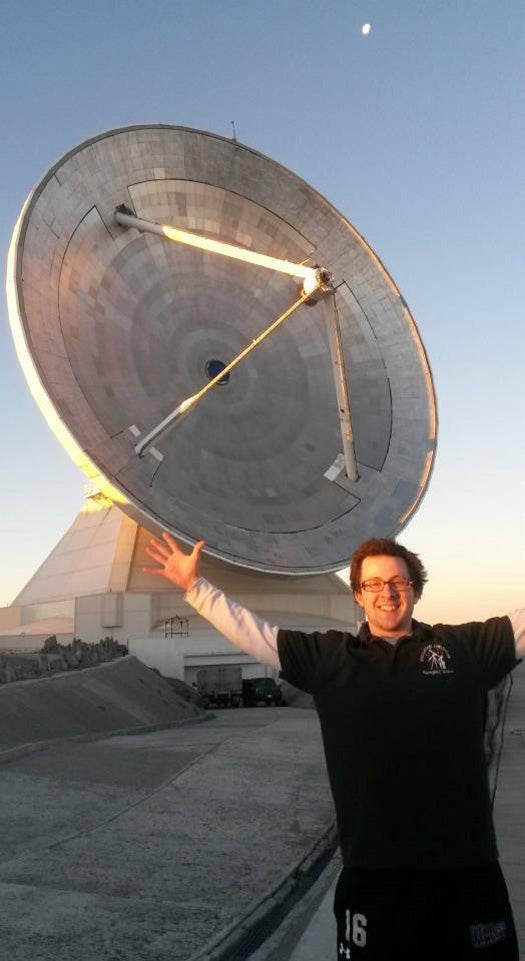Harrington is in astronomy professor Min Yun’s group, which uses the 50-meter diameter Large Millimeter Telescope (LMT), the largest, most sensitive single-aperture instrument in the world for studying star formation. It is operated jointly by UMass Amherst and Mexico’s Instituto Nacional de Astrofísica, Óptica y Electrónica and is located on the summit of Sierra Negra, a 15,000-foot (4,600 meters) extinct volcano in the central state of Puebla, a companion peak to Mexico’s highest mountain.
Yun, Harrington, and colleagues also used the latest generation of satellite telescope and a cosmology experiment on the NASA/ESA collaboration Planck satellite that detects the glow of the Big Bang and microwave background for this work. They estimate that the newly observed galaxies they identified are about 10 billion years old and were formed only about 4 billion years after the Big Bang.
Harrington explained that in categorizing luminous sources, astronomers call an infrared galaxy “ultra-luminous” when it has a rating of about 1 trillion solar luminosities, and that rises to about 10 trillion solar luminosities at the “hyper-luminous” level. Beyond that, for the 100 trillion solar luminosities range of the new objects, “we don’t even have a name,” he said.
Yun added, “The galaxies we found were not predicted by theory to exist; they’re too big and too bright, so no one really looked for them before.” Discovering them will help astronomers understand more about the early universe. “Knowing that they really do exist and how much they have grown in the first 4 billion years since the Big Bang helps us estimate how much material was there for them to work with. Their existence teaches us about the process of collecting matter and of galaxy formation. They suggest that this process is more complex than many people thought.”
The newly observed galaxies are not as large as they appear, the researchers point out. Follow-up studies suggest that their extreme brightness arises from a phenomenon called gravitational lensing that magnifies light passing near massive objects, as predicted by Einstein’s general relativity. As a result, from Earth they look about 10 times brighter than they really are. Even so, they are impressive, Yun said.
Gravitational lensing of a distant galaxy by another galaxy is quite rare, he added, so finding as many as eight potential lensed objects as part of this investigation “is another potentially important discovery.” Harrington points out that discovering gravitational lensing is already like finding a needle in a haystack, because it requires a precise alignment from viewing on Earth. “On top of that, finding lensed sources this bright is as rare as finding the hole in the needle in the haystack.”
They also conducted analyses to show that the galaxies’ brightness is most likely due solely to their amazingly high rate of star formation. “The Milky Way produces a few solar masses of stars per year, and these objects look like they form one star every hour,” Yun said. “We still don’t know how many tens to hundreds of solar masses of gas can be converted into stars so efficiently in these objects, and studying these objects might help us to find out,” added Harrington.
For this work, the team used data from the most powerful international facilities available today to achieve these discoveries — the Planck Surveyor, the Herschel, and the LMT. As Yun explained, the all-sky coverage of the Planck is the only way to find these rare but exceptional objects, but the much higher resolutions of the Herschel and the LMT are needed to pinpoint their exact locations.
He suggested, “If the Planck says there’s an object of interest in Boston, the Herschel and LMT have the precision to say that the object is on which table in a particular bar next to Fenway Park.” With this information, another LMT instrument called “Redshift Search Receiver” can be deployed to determine how far away and how old these galaxies are and how much gas they contain to sustain their extreme luminosities.










